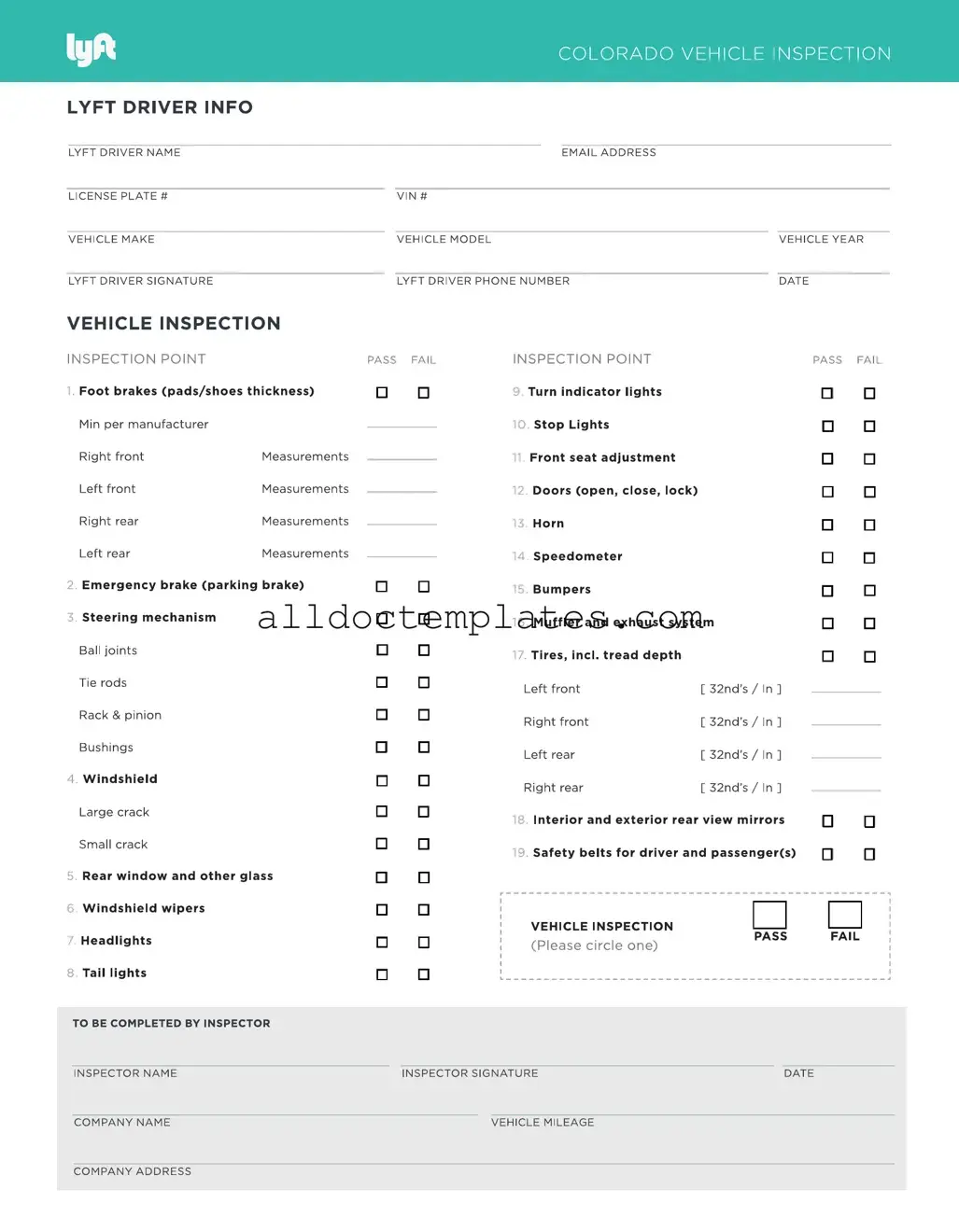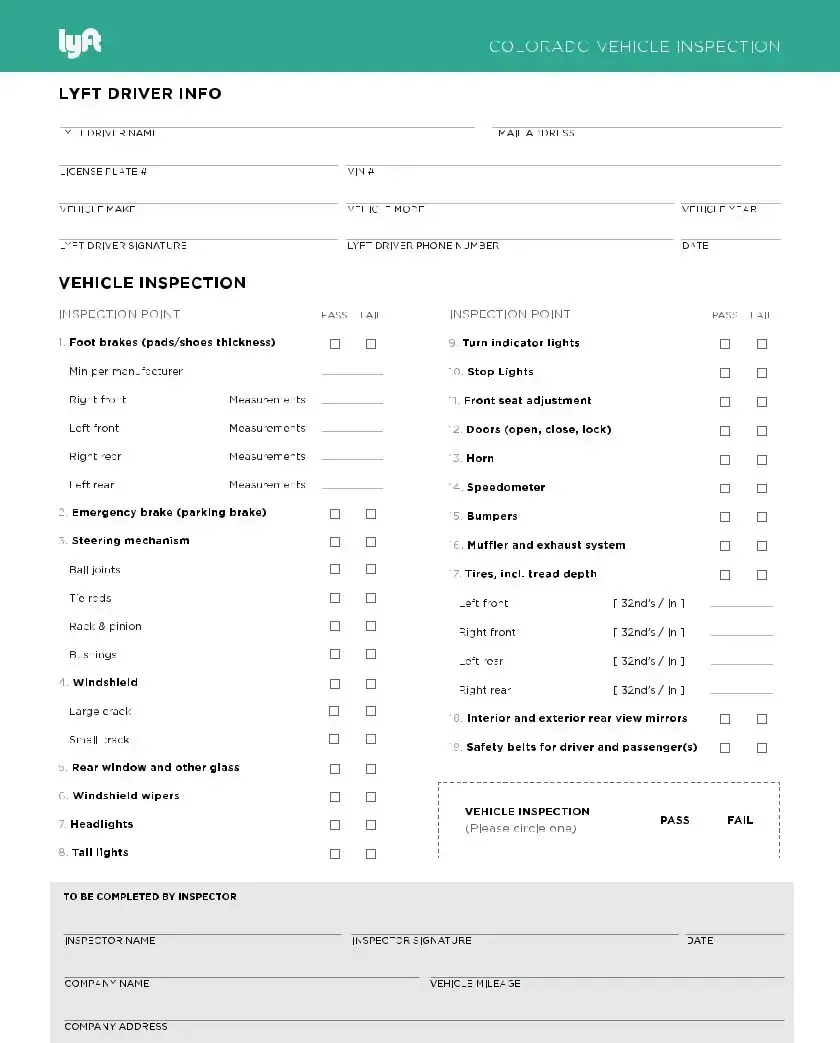Fill in a Valid Lyft Inspection Form
The Lyft Inspection form is a critical document used to ensure that vehicles meet safety and operational standards before they can be used on the Lyft platform. This form requires a thorough inspection by a certified mechanic, covering essential components such as brakes, lights, and tires. Completing this inspection helps maintain safety for both drivers and passengers alike.
Get Your Form Now

